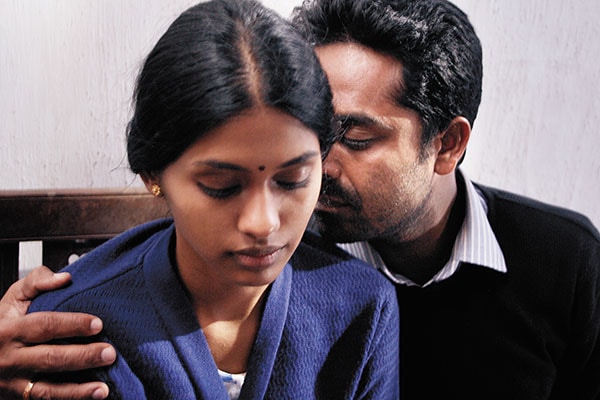Cinema Rises in the East
There are fascinating dynamics between Indian and Asian cinema. There's a lot to learn from the minnows in the neighbourhood


For too long, india has been obsessed with the west. but we have far more in common with Asia: Culture, traditional values, family ties and emphasis on humanity, apart from trade, markets, religions such as Buddhism and Hinduism, and more. With foresight, we could develop closer ties and markets in Asia, including for films.
I have always wondered why Bollywood has ignored the massive Chinese film market right next door, for which the whole world is vying. I can’t recollect any Indian film set in China, between V Shantaram’s Dr Kotnis Ki Amar Kahani (1946) and Nikhil Advani’s Chandni Chowk to China (2009), co-produced by Warner Bros—a gap of 63 years.A handful of Indian films, including 3 Idiots, My Name is Khan and English Vinglish, have released in Asian nations, such as China, Hong Kong and Korea. There have been very few East Asian collaborations with India, including Hong Kong director Stanley Tong’s The Myth, a masala film starring Jackie Chan (Hong Kong), Kim Hee-sun (Korea) and Mallika Sherawat (India), partly shot in India. Chinese director Peter Chan’s Perhaps Love had Bollywood choreography by Farah Khan. And Ang Lee’s Oscar-winning Life of Pi was a Hollywood film with Indian actors Irrfan Khan and Suraj Sharma.
Yet, there are fascinating dynamics between Indian and Asian cinema. While Raj Kapoor’s films like Awara have been popular in Russia for decades, Mithun Chakraborty’s Disco Dancer has found appreciation in Uzbekistan and Kyrgyzstan. (A talented young Uzbeki filmmaker at the Locarno International Film Festival, on being told I was from India, immediately broke into ‘Jimmy, Jimmy, aaja, aaja’ from Disco Dancer.)
In Japan, they love Rajinikanth’s Muthu. In Indonesia, Garin Nugroho has directed the magnificent Opera Jawa, a modern, multi-art updating of the Ramayana. Singaporean director Eric Khoo’s My Magic, shown at Cannes, was entirely in Tamil. Malaysia’s Deepak Kumaran Menon directed Chemman Chaalai (The Gravel Road), the country’s first film in Tamil. Taiwanese director Tsai Ming-liang’s brilliant I Want to Sleep Alone featured Bangladeshi and Tamil immigrant labourers speaking their own tongues. Sri Lankan director Vimukthi Jayasundara’s Chatrak (Mushrooms), a Bengali feature film set in Kolkata, was at Cannes in 2011.
A few film-related events took place in Asia in May and June this year that, while seemingly unrelated, point to deepening Asian ties in many nations, including in India.  A scene from Sri Lanka’s Oba Nathuwa Oba Ekka
A scene from Sri Lanka’s Oba Nathuwa Oba Ekka
PVR Directors’ Rare released Sri Lankan director Prasanna Vithanage’s Oba Nathuwa Oba Ekka (With You, Without You) in June. This exquisite film—a tragic love story between a former Sinhalese army man and a Tamil refugee girl—was released in six Indian cities. It is a real triumph for an Asian film, an arthouse jewel at that, to get a theatrical release in India’s notoriously inward-looking market. The film has many Asian synergies: Adapted from Fyodor Dostoyevsky’s novella, A Gentle Creature, it stars magnificently understated Sri Lankan actor Shyam Fernando and three Indian collaborators—actress Anjali Patil, co-producer Rahul Roy of Aakar (a Delhi-based trust that works in the field of media and culture), and National Award-winning editor Sreekar Prasad. It earned a Best Film nomination at the Asia Pacific Screen Awards, won a Silver Peacock for Best Actress at the International Film Festival of India, and a NETPAC (Network for the Promotion of Asian Cinema) Award in Vesoul, France.
In June again, Kathmandu-based Docskool organised Clinik, a lab for script and production development for young South Asian filmmakers. It brought together under-35 filmmakers from Sri Lanka, Bangladesh, Nepal, Afghanistan and Myanmar. Headed by Nepali filmmaker Kshitiz Adhiraj, it was held in collaboration with the National Film Development Corporation of India and the Hong Kong Asia Film Financing Forum. As a script mentor in the lab, I was impressed to note that almost all the scripts reflected the filmmakers’ concerns for socio-political issues in their respective countries: Unbridled greed and the traditional kamlari system of sexually-exploited slave maids in Nepal, relationships affected by the civil war in Sri Lanka, justice for war criminals of the 1971 genocide in Bangladesh, and the fraught relationship between the army and the citizens in Myanmar.
In distant Australia, the Brisbane International Film Festival has been recast as the Brisbane Asia Pacific Film Festival, closely tied with the Asia Pacific Screen Awards (APSA) for the finest films from 70 Asian nations. The idea is to be more closely “aligned to the city’s and state’s aspiration to engage culturally and economically with the Asia Pacific region.”
Moreover, as a member of the APSA Nominations Council, it was exhilarating for me to see that Sri Lanka (Vithanage’s Oba Nathuwa Oba Ekka) and Bangladesh (Mostofa Sarwar Farooki’s Television) earned Best Film nominations last year. India earned none, despite the fact that it had sent 29 entries to APSA—more than all the films released in Sri Lanka annually! We would do well to learn from the minnows in the neighbourhood.
Meenakshi Shedde is India Consultant to the Berlin Film Festival, an award-winning critic and curator to festivals worldwide
First Published: Jul 29, 2014, 06:28
Subscribe Now(This story appears in the Feb 05, 2010 issue of Forbes India. To visit our Archives, Click here.)
